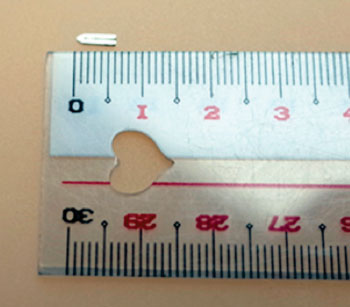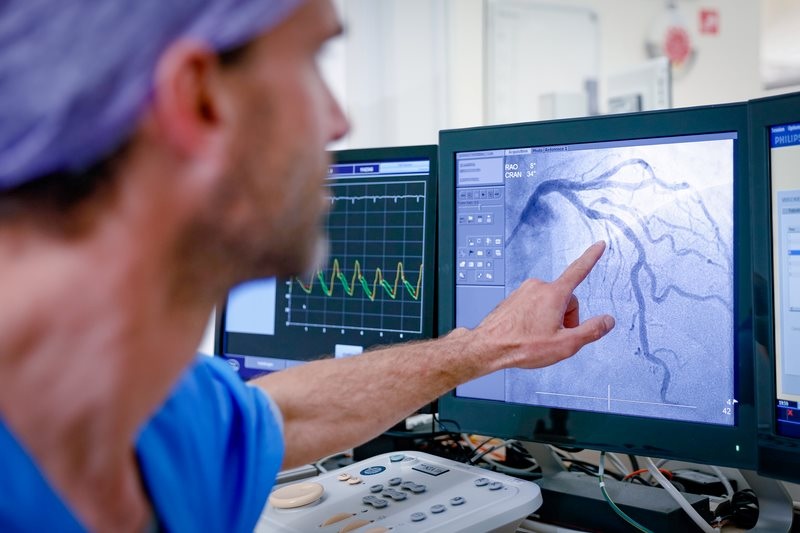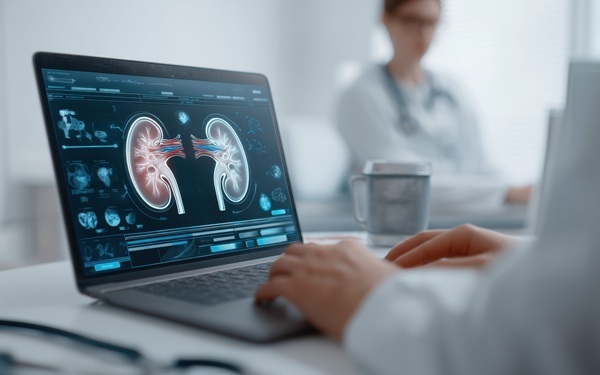Dissolvable Surgical Clip Improves Diagnostic Imaging
|
By HospiMedica International staff writers Posted on 13 May 2015 |

Image: The Kobe dissolvable surgical clip (Photo courtesy of Kobe University).
A safe surgical clip could reduce postoperative complication rates and minimize problems associated with diagnostic imaging.
Developed by researchers at Kobe University (Japan), the 5-mm dissolvable surgical clip is made of a magnesium alloy that dissolves and is absorbed by the body after a certain period of time. The alloy also contains calcium and zinc to improve its microstructure, ensuring fastening ability and formability. To evaluate the safety of the clip, an implantation study was conducted in a subcutaneous mouse model. The results showed that very little gas was produced as the clip dissolved, and there was no inflammation of the surrounding tissues after 12 weeks.
As the volume of the implanted clip was reduced by almost half during that time, the researchers concluded it would likely dissolve completely within one year. Blood tests revealed that levels of magnesium and other substances in the blood were in the normal range after 12 weeks. To evaluate the functionality of the clip, it was tested in a rat model in which the biliary duct, portal vein, hepatic artery, and hepatic vein were occluded with the clip and a partial liver was removed. During a monitoring period of eight weeks, the clip functioned properly, and micro CT scanning revealed that the quality of images was not degraded.
“We will conduct further in vivo studies and a clinical study within two to three years,” said metallurgical engineer, Prof. Toshiji Mukai, PhD, of the Kobe University Graduate School of Engineering, who was involved in developing the clip. “Kobe University works toward the development of new medical devices. We will continue to promote collaboration between the graduate schools of medicine and engineering.”
Most surgical clips are made of titanium, and as many as 30 to 40 clips may be used during a single surgical procedure. The retained clips lead to diminished quality of computed tomography (CT) and magnetic resonance imaging (MRI) images around the wound area, and can potentially cause complications.
Related Links:
Kobe University
Developed by researchers at Kobe University (Japan), the 5-mm dissolvable surgical clip is made of a magnesium alloy that dissolves and is absorbed by the body after a certain period of time. The alloy also contains calcium and zinc to improve its microstructure, ensuring fastening ability and formability. To evaluate the safety of the clip, an implantation study was conducted in a subcutaneous mouse model. The results showed that very little gas was produced as the clip dissolved, and there was no inflammation of the surrounding tissues after 12 weeks.
As the volume of the implanted clip was reduced by almost half during that time, the researchers concluded it would likely dissolve completely within one year. Blood tests revealed that levels of magnesium and other substances in the blood were in the normal range after 12 weeks. To evaluate the functionality of the clip, it was tested in a rat model in which the biliary duct, portal vein, hepatic artery, and hepatic vein were occluded with the clip and a partial liver was removed. During a monitoring period of eight weeks, the clip functioned properly, and micro CT scanning revealed that the quality of images was not degraded.
“We will conduct further in vivo studies and a clinical study within two to three years,” said metallurgical engineer, Prof. Toshiji Mukai, PhD, of the Kobe University Graduate School of Engineering, who was involved in developing the clip. “Kobe University works toward the development of new medical devices. We will continue to promote collaboration between the graduate schools of medicine and engineering.”
Most surgical clips are made of titanium, and as many as 30 to 40 clips may be used during a single surgical procedure. The retained clips lead to diminished quality of computed tomography (CT) and magnetic resonance imaging (MRI) images around the wound area, and can potentially cause complications.
Related Links:
Kobe University
Latest Critical Care News
- Magnetically Guided Microrobots to Enable Targeted Drug Delivery

- Smart Nanomaterials Detect and Treat Traumatic Brain Injuries Simultaneously
- Earlier Blood Transfusion Could Reduce Heart Failure and Arrhythmia in Heart Disease Patients
- 'Smart' Shirt Detects Epileptic Seizures in Real Time
- Skin Patch Measures Effectiveness of Flu/COVID Vaccines in 10 Minutes
- Complete Revascularization Reduces Risk of Death from Cardiovascular Causes
- Tiny Fish-Inspired Robots Navigate Through Body to Deliver Targeted Drug Therapy
- Coronary Artery Stenosis Could Protect Patients from Pulmonary Embolism Effects
- Sweat-Powered Sticker Turns Drinking Cup into Health Sensor
- Skin-Mounted 3D Microfluidic Device Analyzes Sweat for Real-Time Health Assessment
- New Therapeutic Brain Implants to Eliminate Need for Surgery
- Stem Cell Patch Gently Heals Damaged Hearts Without Open-Heart Surgery
- Biomaterial Vaccines to Make Implanted Orthopedic Devices Safer
- Deep Learning Model Predicts Sepsis Patients Likely to Benefit from Steroid Treatment
- Programmable Drug-Delivery Patch Promotes Healing and Regrowth After Heart Attack
- Breakthrough Ultrasound Technology Measures Blood Viscosity in Real Time
Channels
Surgical Techniques
view channel
New Study Findings Could Halve Number of Stent Procedures
When a coronary artery becomes acutely blocked during a heart attack, opening it immediately is essential to prevent irreversible damage. However, many patients also have other narrowed vessels that appear... Read more
Breakthrough Surgical Device Redefines Hip Arthroscopy
Hip arthroscopy has surged in popularity, yet surgeons still face major mechanical constraints when navigating deep joint spaces through traditional cannulas. Limited tool mobility and the need for an... Read morePatient Care
view channel
Revolutionary Automatic IV-Line Flushing Device to Enhance Infusion Care
More than 80% of in-hospital patients receive intravenous (IV) therapy. Every dose of IV medicine delivered in a small volume (<250 mL) infusion bag should be followed by subsequent flushing to ensure... Read more
VR Training Tool Combats Contamination of Portable Medical Equipment
Healthcare-associated infections (HAIs) impact one in every 31 patients, cause nearly 100,000 deaths each year, and cost USD 28.4 billion in direct medical expenses. Notably, up to 75% of these infections... Read more
Portable Biosensor Platform to Reduce Hospital-Acquired Infections
Approximately 4 million patients in the European Union acquire healthcare-associated infections (HAIs) or nosocomial infections each year, with around 37,000 deaths directly resulting from these infections,... Read moreFirst-Of-Its-Kind Portable Germicidal Light Technology Disinfects High-Touch Clinical Surfaces in Seconds
Reducing healthcare-acquired infections (HAIs) remains a pressing issue within global healthcare systems. In the United States alone, 1.7 million patients contract HAIs annually, leading to approximately... Read moreHealth IT
view channel
EMR-Based Tool Predicts Graft Failure After Kidney Transplant
Kidney transplantation offers patients with end-stage kidney disease longer survival and better quality of life than dialysis, yet graft failure remains a major challenge. Although a successful transplant... Read more
Printable Molecule-Selective Nanoparticles Enable Mass Production of Wearable Biosensors
The future of medicine is likely to focus on the personalization of healthcare—understanding exactly what an individual requires and delivering the appropriate combination of nutrients, metabolites, and... Read moreBusiness
view channel
Philips and Masimo Partner to Advance Patient Monitoring Measurement Technologies
Royal Philips (Amsterdam, Netherlands) and Masimo (Irvine, California, USA) have renewed their multi-year strategic collaboration, combining Philips’ expertise in patient monitoring with Masimo’s noninvasive... Read more
B. Braun Acquires Digital Microsurgery Company True Digital Surgery
The high-end microsurgery market in neurosurgery, spine, and ENT is undergoing a significant transformation. Traditional analog microscopes are giving way to digital exoscopes, which provide improved visualization,... Read more
CMEF 2025 to Promote Holistic and High-Quality Development of Medical and Health Industry
The 92nd China International Medical Equipment Fair (CMEF 2025) Autumn Exhibition is scheduled to be held from September 26 to 29 at the China Import and Export Fair Complex (Canton Fair Complex) in Guangzhou.... Read more













